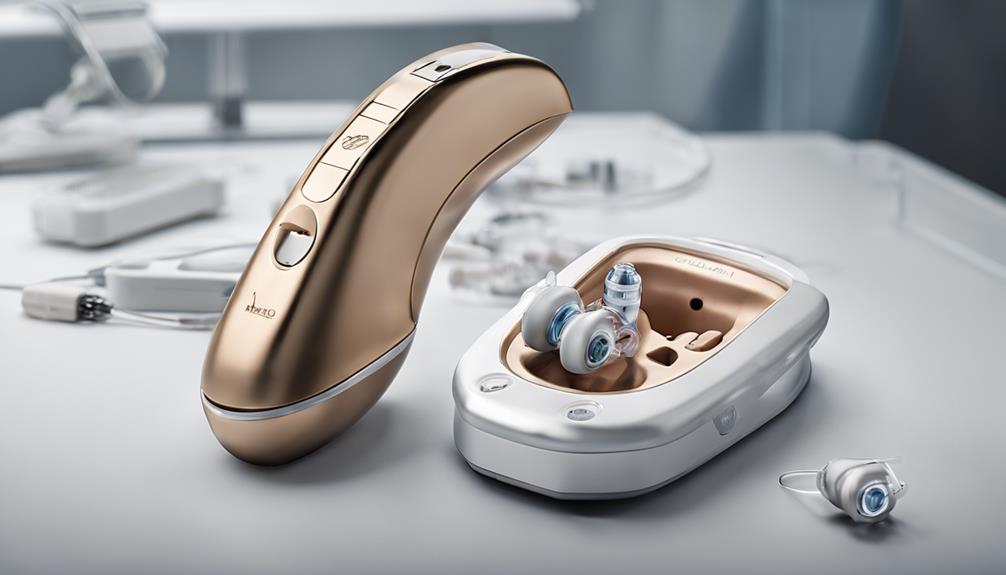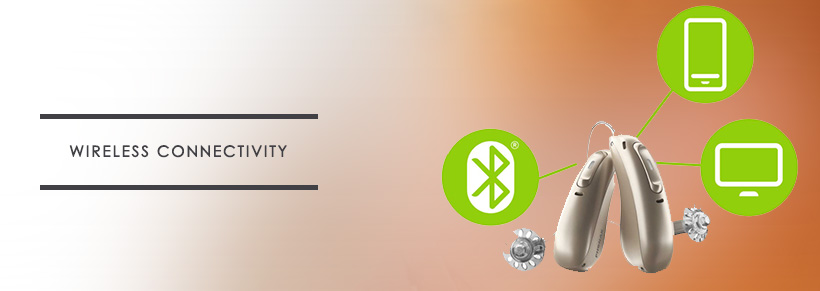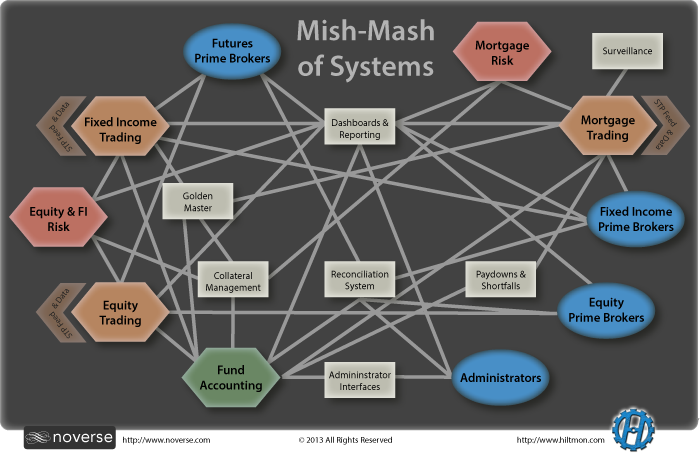Hearing Aid Technology Levels: A Guide to Modern Hearing Solutions
Hearing aid technology levels are a fascinating area of innovation, with advancements constantly pushing the boundaries of what’s possible for those with hearing loss. From the early acoustic devices of […]
Hearing aid technology levels are a fascinating area of innovation, with advancements constantly pushing the boundaries of what’s possible for those with hearing loss. From the early acoustic devices of the past to today’s sophisticated digital models, the journey of hearing aid technology is one of remarkable progress.
Understanding the different technology levels is crucial for choosing the right hearing aid for individual needs. These levels range from basic models for mild hearing loss to advanced devices with cutting-edge features that address complex hearing challenges. This guide will delve into the intricacies of hearing aid technology levels, exploring their capabilities, limitations, and the impact they have on sound processing and customization.
Emerging Trends in Hearing Aid Technology
Hearing aid technology is constantly evolving, driven by advancements in artificial intelligence, connectivity, and user experience. These advancements are transforming how hearing aids function, providing more personalized and effective solutions for individuals with hearing loss.
Artificial Intelligence and Machine Learning
Artificial intelligence (AI) and machine learning (ML) are revolutionizing hearing aid technology by enabling devices to adapt to individual listening environments and preferences. AI algorithms can analyze sound patterns, identify noise sources, and adjust hearing aid settings in real time to optimize sound clarity and reduce listening fatigue.
- Adaptive Noise Reduction: AI-powered hearing aids can distinguish between speech and noise, selectively reducing background noise while preserving the clarity of spoken words. This feature significantly enhances speech intelligibility in challenging environments like crowded restaurants or noisy streets.
- Personalized Sound Profiles: By analyzing an individual’s hearing loss patterns and listening preferences, AI algorithms can create custom sound profiles that cater to their specific needs. This allows for a more personalized and comfortable listening experience.
- Predictive Sound Processing: AI algorithms can anticipate upcoming sounds and adjust hearing aid settings accordingly. For example, if a user is approaching a busy intersection, the hearing aid can automatically adjust to enhance sound clarity and minimize potential discomfort.
Integration with Smart Devices and Wearables
Hearing aids are increasingly integrating with smart devices and wearables, expanding their functionality and convenience. This integration allows for seamless control and customization, enhancing the overall user experience.
- Remote Control: Users can control their hearing aids remotely through smartphone apps, adjusting volume, programs, and other settings with ease.
- Direct Streaming: Hearing aids can now directly stream audio from smartphones, tablets, and other devices, allowing users to enjoy music, podcasts, and phone calls without the need for external accessories.
- Health Monitoring: Some hearing aids are equipped with sensors that can track vital signs like heart rate and activity levels, providing valuable health data to users and healthcare professionals.
Wireless Connectivity and Streaming Options
Wireless connectivity is a key aspect of modern hearing aid technology, enabling seamless communication and audio streaming. This technology enhances the user experience by providing a more natural and convenient way to interact with the world around them.
- Bluetooth Connectivity: Bluetooth technology allows hearing aids to connect wirelessly to smartphones, TVs, and other devices, enabling hands-free communication and audio streaming.
- Direct Audio Streaming: Hearing aids can now directly stream audio from smartphones and other devices, eliminating the need for external accessories like neck loops or FM transmitters.
- Multi-Device Connectivity: Some hearing aids support multi-device connectivity, allowing users to seamlessly switch between different audio sources, such as a smartphone and a TV, without manually disconnecting and reconnecting.
Improved Battery Life and Charging Technologies, Hearing aid technology levels
Battery life is a crucial factor for hearing aid users, and advancements in battery technology are leading to longer operating times and more convenient charging solutions.
- Longer Battery Life: Modern hearing aids offer significantly longer battery life compared to older models, allowing users to go through an entire day without needing to recharge.
- Wireless Charging: Wireless charging technology eliminates the need for cables and provides a more convenient way to recharge hearing aids.
- Rechargeable Batteries: Rechargeable hearing aids offer a more environmentally friendly and cost-effective alternative to disposable batteries.
Personalized Sound Profiles and Adaptive Algorithms
Personalized sound profiles and adaptive algorithms are key to creating a customized and comfortable listening experience for hearing aid users. These technologies ensure that hearing aids are tailored to individual needs and preferences, optimizing sound quality and reducing listening fatigue.
- Personalized Sound Profiles: Hearing aids can now create custom sound profiles based on an individual’s hearing loss, listening preferences, and environmental factors. This ensures that the sound delivered to the user is tailored to their specific needs.
- Adaptive Algorithms: Advanced algorithms constantly adjust hearing aid settings in real time based on the listening environment and the user’s needs. This ensures optimal sound quality and comfort in all situations.
- Automatic Program Switching: Hearing aids can automatically switch between different programs based on the listening environment, such as quiet, noisy, or speech. This simplifies the user experience and ensures optimal sound quality in all situations.
Outcome Summary: Hearing Aid Technology Levels

As hearing aid technology continues to evolve at an astonishing pace, the future holds exciting possibilities for improving hearing care. With the integration of artificial intelligence, advanced connectivity options, and personalized sound profiles, the goal is to create hearing solutions that are not only effective but also seamless and intuitive. By understanding the different technology levels and their features, individuals can make informed decisions to achieve optimal hearing health and enhance their quality of life.
Hearing aid technology levels are constantly evolving, offering a wide range of options to suit individual needs. From basic amplification to advanced features like noise reduction and directional microphones, there’s a level to match everyone’s hearing loss. Understanding these levels can be a great starting point when considering hearing aids, and it’s also important to explore resources like putting technologies that can help guide you through the process.
The right hearing aid technology can make a significant difference in quality of life, enhancing communication and enjoyment of daily activities.










